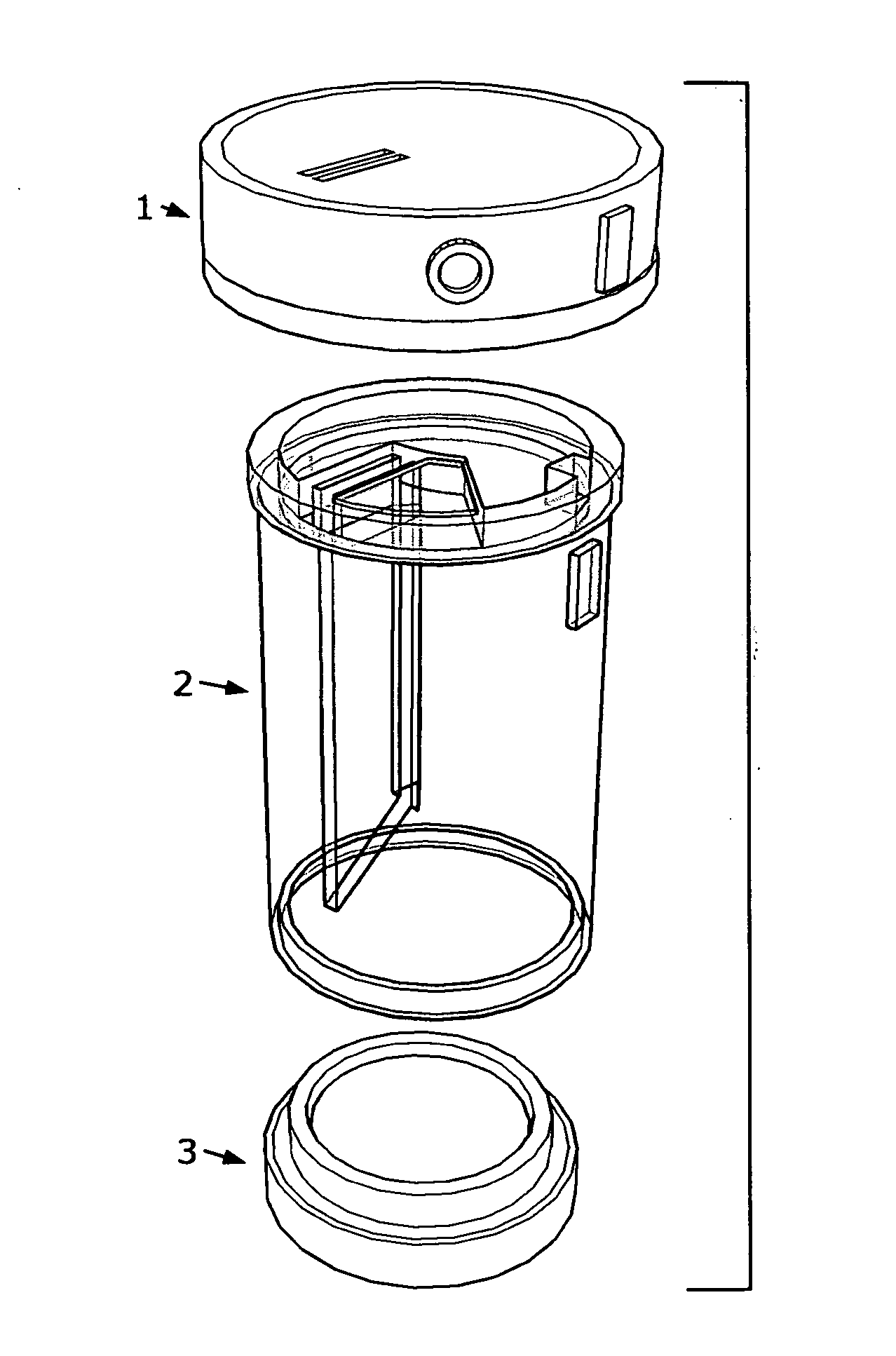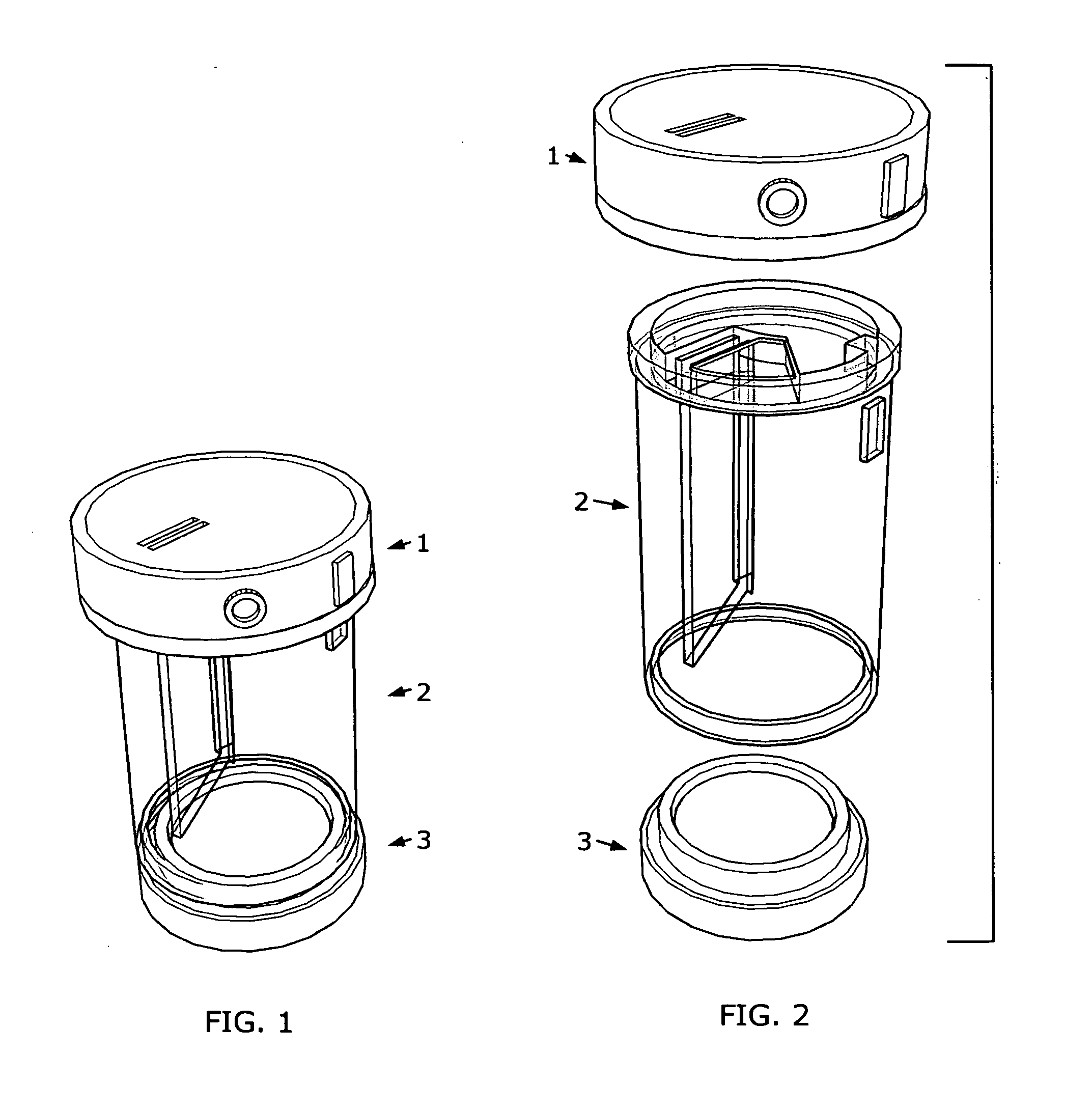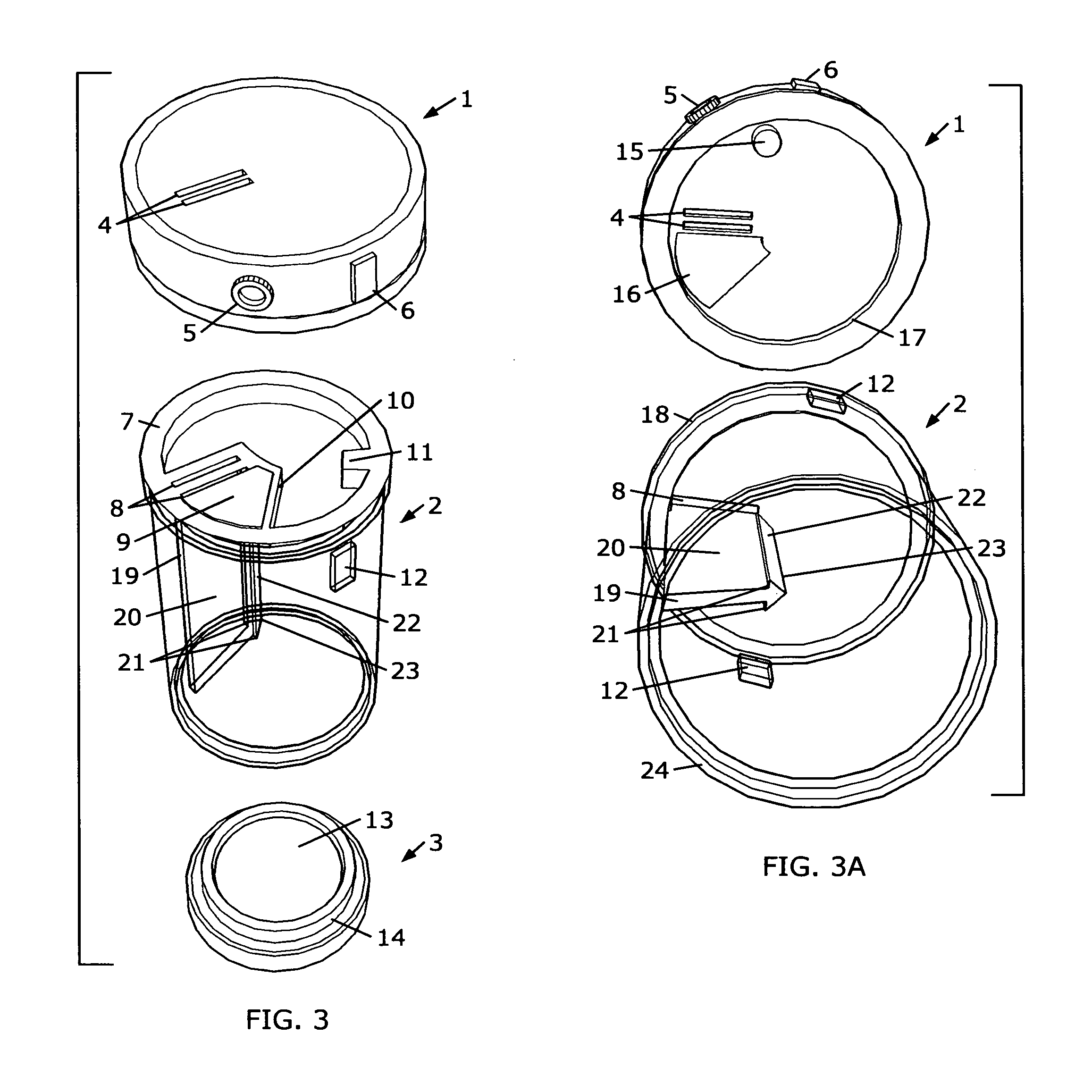Device for singulating and dispensing rigid and semi-rigid strips
a technology of rigid and semi-rigid strips and singulating, which is applied in the direction of instruments, apparatus for dispensing discrete articles, de-stacking articles, etc., can solve the problem of airborne contaminants infiltration potential
- Summary
- Abstract
- Description
- Claims
- Application Information
AI Technical Summary
Benefits of technology
Problems solved by technology
Method used
Image
Examples
first exemplary embodiment (figs.1 , 2 , 3 and 3a)
First Exemplary Embodiment (FIGS. 1, 2, 3 and 3A)
[0053]FIG. 1 shows an outside perspective view of the assembled first exemplary embodiment of the subject dispensers.
[0054]FIG. 2 shows an exploded perspective view of the dispenser in FIG. 1 with its constituent parts: a partially rotatable polymer top cap 1; a transparent polymer storage container 2; and a polymer base cap 3.
[0055]FIG. 3 shows details of the parts in FIG. 2 in an exploded, top perspective view. The top cap 1 is shown with its dual outer apertures (which can also be combined to form a single outer aperture) 4, and its closed 5 and open 6 status indicators. The outer apertures 4 may be sized slightly larger than the inner apertures 8 to insure unobstructed test strip dispensation.
[0056]The top of the storage container 2 is shown with the rotation bearing surface 7, dual inner apertures 8, the outer aperture sealing pad 9, the open rotation stop 10, and closed rotation stop lug 11. Also seen is one of the two top cap s...
second exemplary embodiment (figs.4 , 5 , 6 , 6a)
Second Exemplary Embodiment (FIGS. 4, 5, 6, 6A)
[0072]FIG. 4 shows an outside perspective view of the assembled second exemplary embodiment of the subject dispensers.
[0073]FIG. 5 shows an exploded perspective view of the dispenser in FIG. 4 with its constituent parts: a partially rotatable polymer top cap 1; an opaque polymer capture element insert 25; a transparent polymer storage tube 26; and a polymer base cap 3.
[0074]FIGS. 6 and 6A show details of the parts in FIG. 5. Only selected details of the insert 25 and the storage tube 26 will be described. Unless noted, all other components, features, details and methods are the same as described above in the first exemplary embodiment.
[0075]FIG. 6 shows the parts of FIG. 5 in an exploded perspective view. The top surface of the insert 25 is shown with the same details as the top surface of the storage container 2 described above in the first embodiment. The insert 25 has the capture element 19 from the first embodiment integrally molded...
third exemplary embodiment (figs.7 , 8 , 9 , 9a)
Third Exemplary Embodiment (FIGS. 7, 8, 9, 9A)
[0081]FIG. 7 shows an outside perspective view of the assembled third exemplary embodiment of the subject dispensers.
[0082]FIG. 8 shows an exploded perspective view of the dispenser in FIG. 7 with its constituent parts: a partially rotatable top cap 1; a spring 31; an opaque capture element insert 32; a transparent polymer storage tube 26; and a base cap with desiccant 3.
[0083]Referring to FIGS. 9 and 9A. This third embodiment has all of the details and features of the second embodiment. Accordingly, only three new elements, the spring 31, the spring flex support 33, and the spring engagement pin 34 will be discussed in detail. The top surface of the insert 32 has the same details and features as the insert in the second embodiment described above. This insert, however, has the addition of a raised, molded spring flex support 33. The spring flex support 33 works in conjunction with the rotation stop lug 11 to contain the base of the cant...
PUM
 Login to View More
Login to View More Abstract
Description
Claims
Application Information
 Login to View More
Login to View More - R&D
- Intellectual Property
- Life Sciences
- Materials
- Tech Scout
- Unparalleled Data Quality
- Higher Quality Content
- 60% Fewer Hallucinations
Browse by: Latest US Patents, China's latest patents, Technical Efficacy Thesaurus, Application Domain, Technology Topic, Popular Technical Reports.
© 2025 PatSnap. All rights reserved.Legal|Privacy policy|Modern Slavery Act Transparency Statement|Sitemap|About US| Contact US: help@patsnap.com



